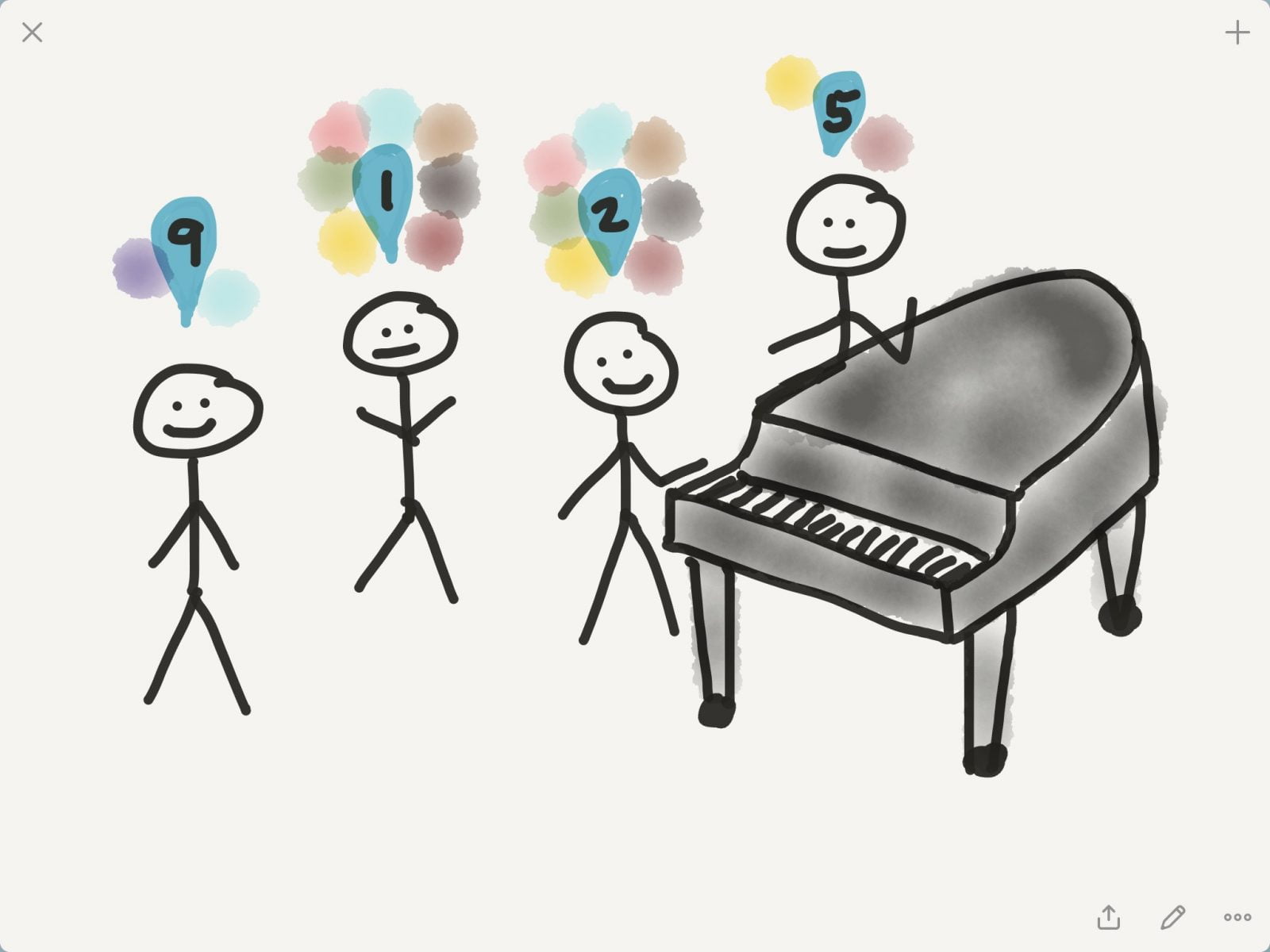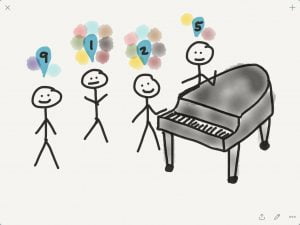
Let’s move on to the excellent article It’s Not How Much; It’s How: Characteristics of Practice Behavior and Retention of Performance Skills, by Duke et al. (2009), which is another dive into analyzing what leads to good retention of learning in music education. Just to be different, I’ll start with the conclusion, and then circle around to the study construction.
“The results showed that the strategies employed during practice were more determinative of performance quality at retention than was how much or how long the pianists practiced”
17 students (advanced piano performance students) were given a 3-measure passage from a difficult Concerto to learn. The students each followed the following protocol for practice:
- 2-min warmup of their choice
- As much time as they need with the passage, a metronome, a pencil, and a piano, to lean the passage well and play it confidently at the target tempo.
- A 24-hour break away from the music, with a promise not to practice it at all
The next day, the students had the same 2-minute warmup period (asking that they do not warm up with the practiced passage). Then they were asked to play straight through the 3 measures at the target tempo 15 times without stopping (these are the retention trials).
After recording numerical data about the practice sessions and retention trials, the researchers watched the recorded practice sessions to make detailed observations about the techniques each participant used to practice. Then they ranked the retention trials of the 17 participants, examining tone, character, and expressiveness of musical performance.
Here are the practice variables that were NOT related significantly to the retention trial rankings:
- total time practiced
- total number of times through the passage during practice
- total number of correct and near-correct times through the passage
Here are the practice variables that were significantly related to the retention trial rankings:
- number of complete incorrect performance trials (positive correlation)
- percentage of all complete trials that were correct (negative correlation)
- percentage of complete trials that were correct and near-correct (negative correlation)
Three of the participants were ranked as clearly superior to the other 14 students. Examining the practice sessions from these three students yielded a set of 8 strategies (see p. 317 of the article for the full list), a few of which are summarized here :
- early in practicing, the playing was hands-together
- when errors appeared, they were addressed immediately
- the precise location and source of each error was identified accurately, rehearsed, and corrected
- the tempo was varied
- target passages were repeated until stabilized (no more errors)
While the other 14 players would employ some of the 8 strategies, it was only the top 3 that used all of them. In other words, the top-performing practicers had very good metacognition skills. They could accurately identify their mistakes, sometimes anticipating them in advance, and knew what kinds of actions to take to work in the direction of correcting the mistakes and avoiding them in the future.
One of my key takeaways from this article was a quote from the literature review, which I think is much more widely applicable to many subjects (not just music):
“making practice assignments in terms of time practiced instead of goals accomplished remains one of the most curious and stubbornly persistent traditions in music pedagogy”
In mathematics, we assign lists of problems, and students are to do all the problems regardless of their mastery over time. I’m wondering if we shouldn’t give the students a suggested list to practice from, with goals about what they should learn, and tell them to practice until they are reasonably sure they have accomplished the goals. I might go so far as to ask them to do the assignment in pen, crossing out and correcting mistakes as they go, so they can see the progress towards mastery of the topic.
I’m afraid that our relentless focus on time or quantity practiced might be handicapping students’ metacognitive abilities. Do our students actually know when they have mastered a topic? Do they transparently remember the mistakes they make after erasing them and overwriting them? I’m reminded of the Trevor Ragan video about Blocked and Random Practice that says that practice is going to be ugly. I think practice that produces learning IS going to be ugly, and somehow we need to help students be okay with this.
Challenge: Think about how to structure student out-of-class practice so that the focus is not on time or quantity, but on the error analysis and thoughtful correction. Try to make the whole purpose of the assignment around accurately identifying mistakes and working towards mastery of the material rather than “checking off” the to-do items on a list.
Note: A weekly bite of learning and challenge goes out every week. If you’d like to have it delivered to your inbox, sign up at Weekly Teaching Challenge.
Reference:
Duke, R. A., Simmons, A. L., & Cash, C. D. (2009). It’s not how much; it’s how characteristics of practice behavior and retention of performance skills. Journal of Research in Music Education, 56(4), 310-321.




